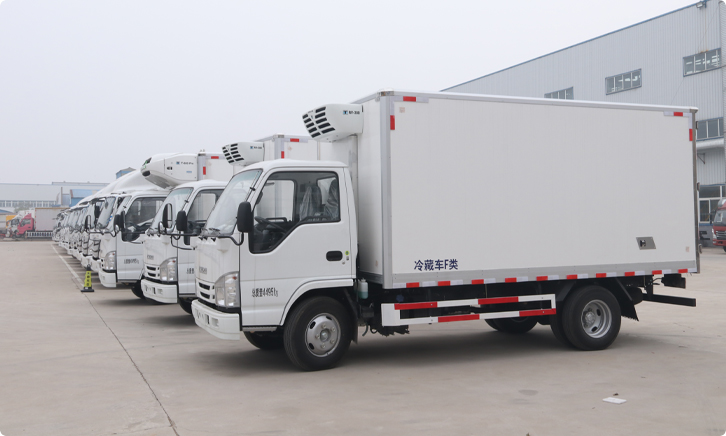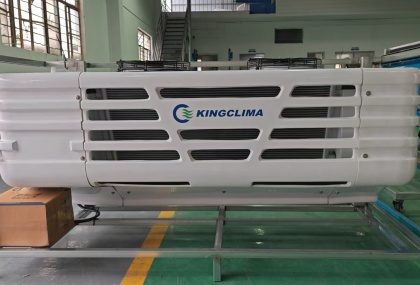Suggestion for choosing transportation refrigeration
Choosing an aftermarket transportation refrigeration unit involves evaluating various factors to ensure the system meets your specific requirements for preserving perishable goods. Here's a comprehensive guide to help you make the best choice:
1. Understand Your Needs
Cargo Type: Identify what type of goods you’ll be transporting (e.g., frozen food, pharmaceuticals, fresh produce) to determine the required temperature range.
Frozen Goods: Requires temperatures below -18°C (0°F).
Chilled Goods: Needs temperatures between 0°C and 8°C (32°F–46°F).
Vehicle Size: Match the refrigeration unit's capacity to the size of your vehicle. Smaller vans require less powerful units compared to large trucks.
2. Temperature Requirements
Single vs. Multi-Temperature Zones:
Single Temperature: Suitable for transporting goods with uniform temperature requirements.
Multi-Temperature: Ideal if you need to carry different goods with varying temperature needs simultaneously.
Temperature Precision: Look for units with precise temperature control to maintain consistent conditions.
3. Cooling Capacity
Evaluate the refrigeration unit's BTU (British Thermal Unit) rating or cooling capacity.
Ensure it’s adequate for the size of your vehicle and the thermal load (cargo and ambient temperature).

4. Power Source
Engine-Driven Units:
Powered by the vehicle's engine.
More cost-effective upfront but increases engine wear and fuel consumption.
Electric-Powered Units:
Operate independently using battery power or an external power source.
More eco-friendly and fuel-efficient but may have higher initial costs.
Hybrid Systems:
Combine engine-driven and electric power for flexibility and efficiency.
5. Brand Reputation
Research brands known for reliability, durability, and customer support.
Popular aftermarket brands often have better availability of spare parts and service centers.
6. Maintenance and Repair
Choose a unit that is easy to maintain with accessible components.
Consider the availability of replacement parts and local service technicians.
7. Noise Level
For urban deliveries or residential areas, opt for units with low noise levels to comply with local regulations and maintain a quieter environment.

8. Environmental Considerations
Refrigerant Type: Look for units using eco-friendly refrigerants with low Global Warming Potential (GWP) to comply with environmental regulations.
Energy Efficiency: Choose units with high energy efficiency to reduce operating costs and environmental impact.
9. Budget
Consider both the upfront cost and long-term operating expenses:
Initial Purchase: Compare prices of different models to find one within your budget.
Operating Costs: Factor in fuel consumption, maintenance, and repairs.
Warranty: Opt for units with a good warranty to minimize unexpected expenses.
10. Features and Technology
Remote Monitoring: Some units come with telematics to track temperature, location, and system performance in real time.
Automatic Defrost: Ensures consistent cooling by preventing ice buildup.
Easy Installation: Units with simple installation processes can save time and costs.
11. Regulatory Compliance
Ensure the unit meets local and international standards for transportation of perishable goods (e.g., FDA, HACCP, or EU regulations).
12. Test and Compare
Test performance before purchasing if possible.
Compare multiple models in terms of features, capacity, and reviews to find the best fit for your needs.
Conclusion
Choosing the right aftermarket transportation refrigeration unit involves assessing your cargo needs, vehicle specifications, and budget. Focus on units that offer the best balance of performance, reliability, and cost-effectiveness, while also considering environmental and regulatory factors. Consulting with experts and reading user reviews can further help you make an informed decision. As a professional truck air conditioner supplier, Kingclima offer 7*24 proessional and patient help, if you need help, please contact us.
-
From Farm to Table: Trust Our Refrigeration Systems to Deliver Freshness!
2025-09-26 15:23:09
The journey of perishable goods—from farm harvests to grocery shelves—demands precision, reliability, and unwavering temperature control. Any breakdown in the cold chain can result in spoilage, financial losses, and compromised food safety. That’s why leading logistics providers and food distributors rely on advanced truck refrigeration systems to ensure their cargo arrives fresh, safe, and market-ready.
read more
-
Don’t Let the Heat Spoil Your Haul – Try Our Advanced Refrigeration Systems!
2025-09-26 14:55:58
In the world of perishable freight, temperature control isn’t just a feature—it’s a necessity. Whether you're transporting fresh produce, dairy, pharmaceuticals, or frozen seafood, a single degree of deviation can mean the difference between profit and loss. At kingclima, we engineer high-performance truck refrigeration systems that combat heat, humidity, and harsh conditions—ensuring your cargo arrives in pristine condition, every time.
read more
-
Reliable Cooling for Every Mile – Explore Our Truck Refrigeration Range!
2025-09-25 16:15:32
At kingclima, we understand that your refrigerated cargo represents more than just inventory - it's your reputation, your customers' trust, and your bottom line. Our comprehensive range of truck refrigeration systems delivers military-grade reliability combined with cutting-edge technology to protect your temperature-sensitive shipments across every mile of their journey.
read more


.jpg)

